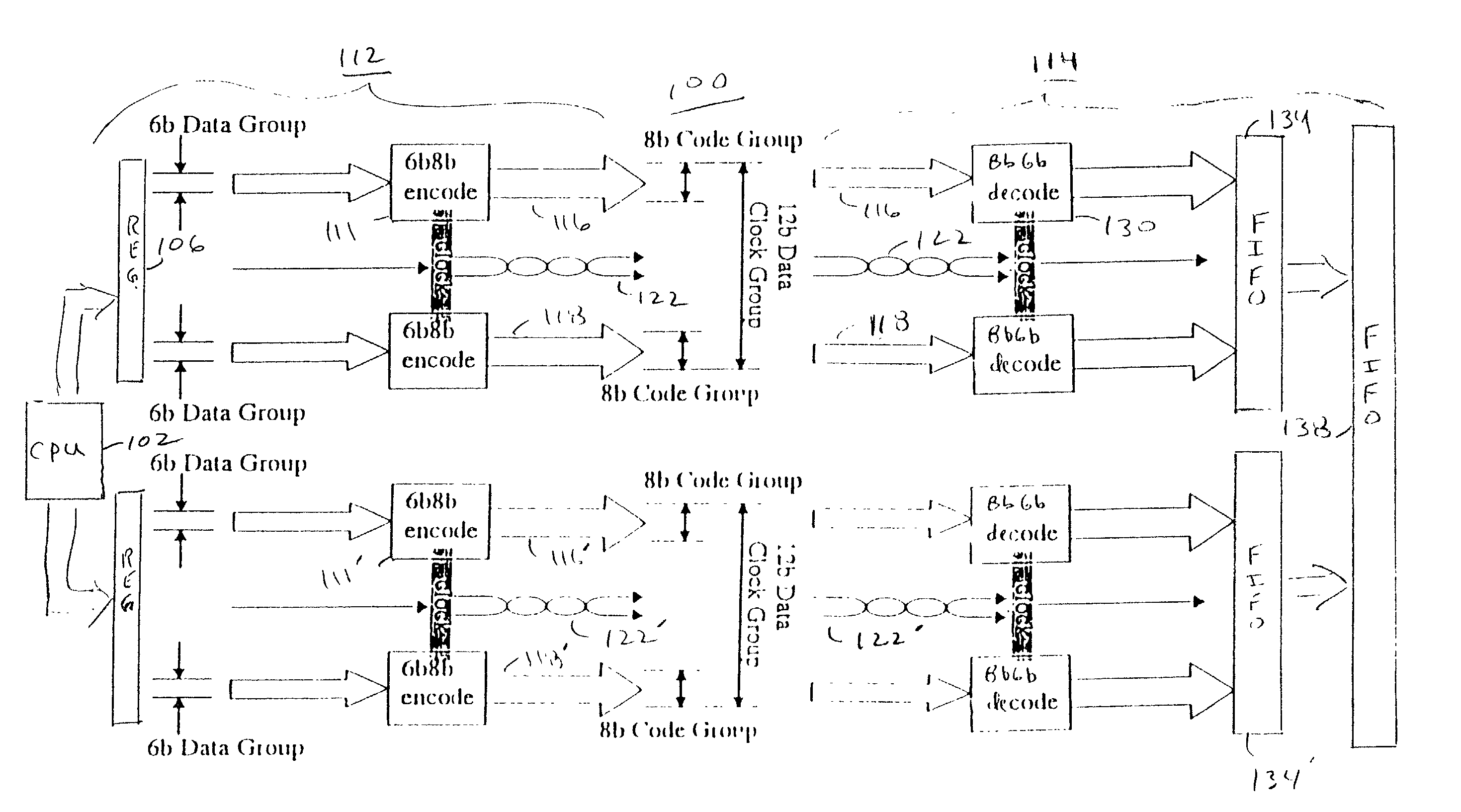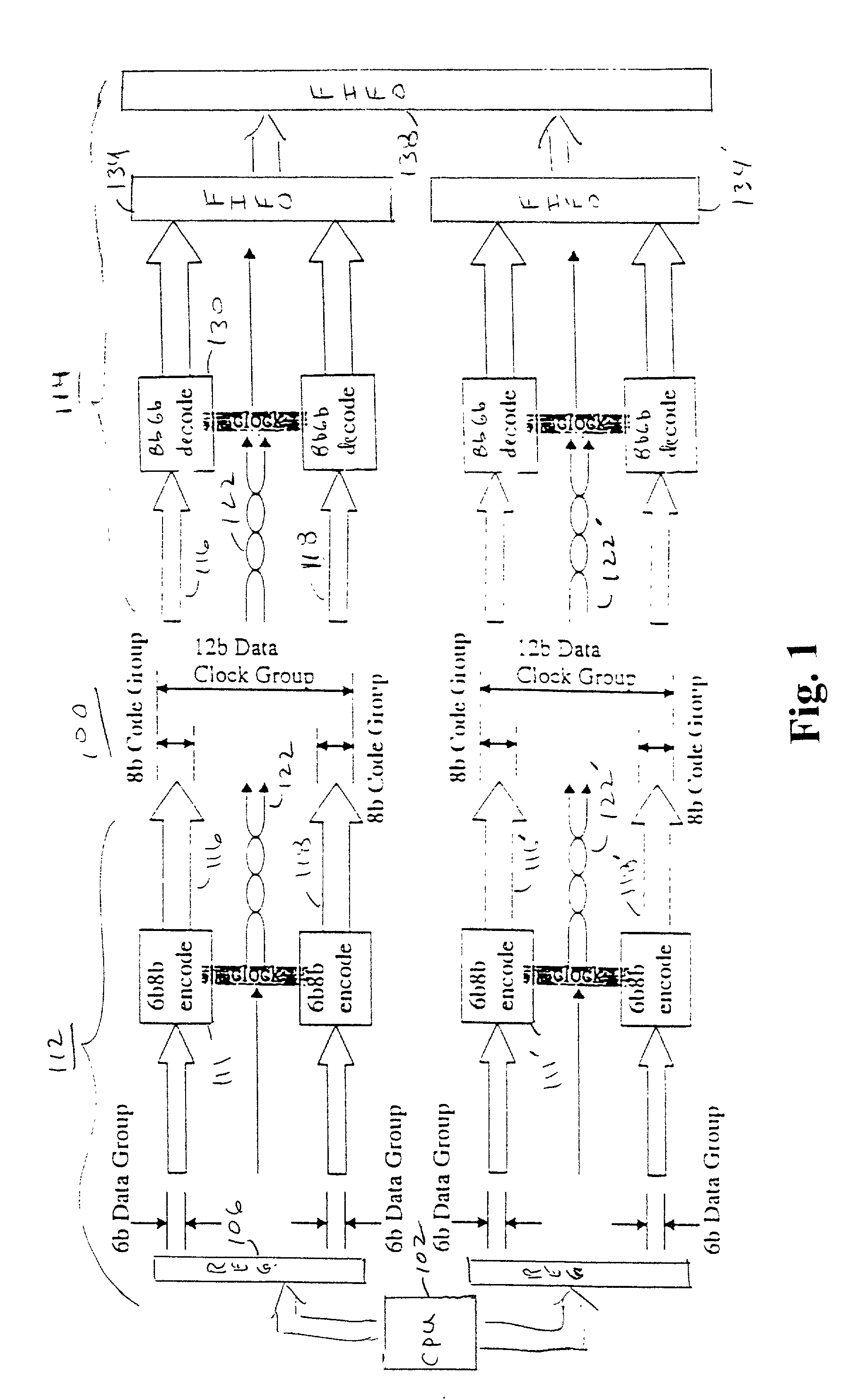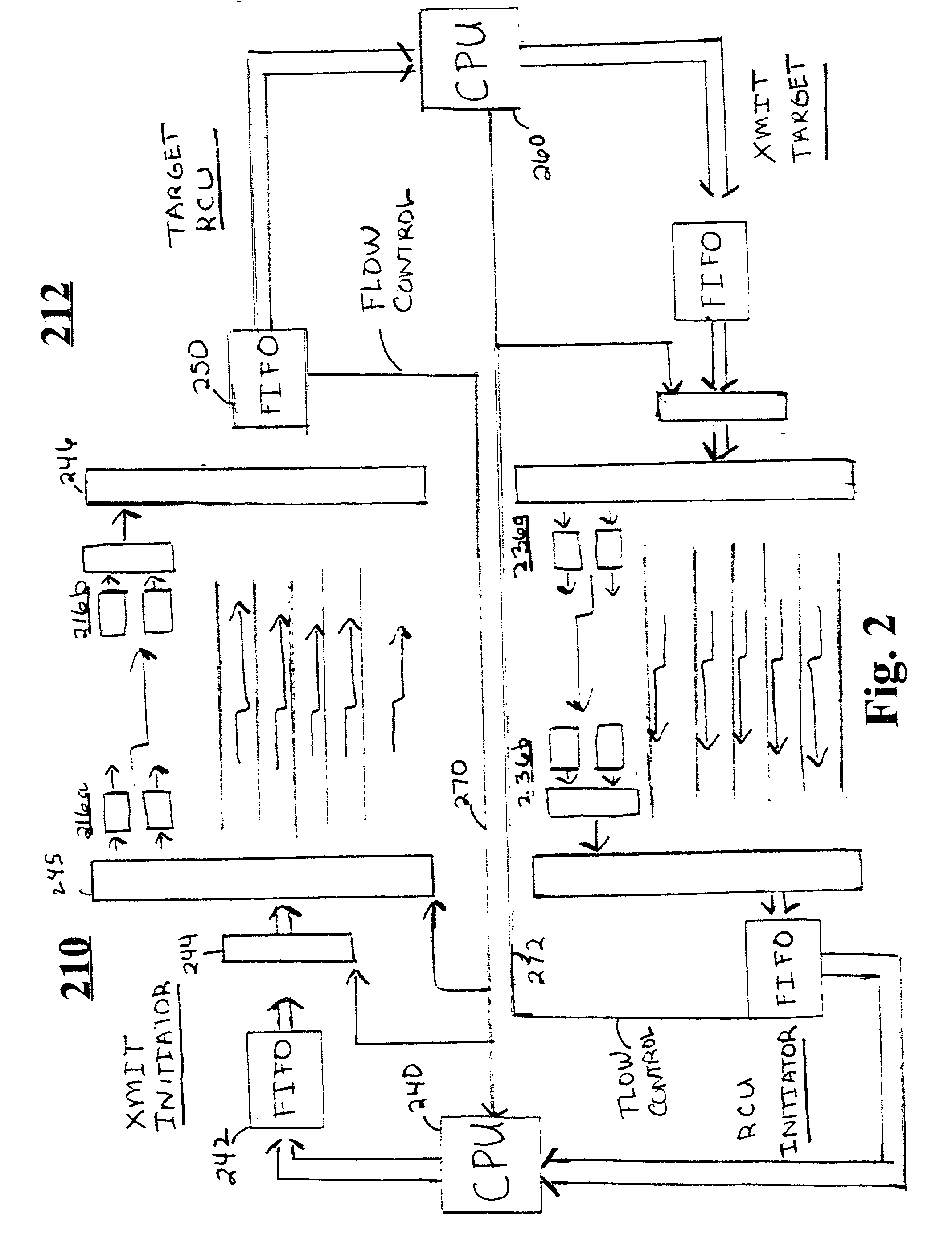Parallel data communication having skew intolerant data groups
- Summary
- Abstract
- Description
- Claims
- Application Information
AI Technical Summary
Problems solved by technology
Method used
Image
Examples
Embodiment Construction
[0020] The present invention is believed to be generally applicable to methods and arrangements for transferring data between two modules (functional blocks) intercoupled by a parallel data communication path. The invention has been found to be particularly advantageous for high-speed data transfer applications susceptible to data-skew errors. Examples of such applications include, among others: SSTL (stub series transceiver / terminated logic); RSL (Rambus Signaling Logic) interfaces; closely-connected applications such as where the parallel data communication path intercouples the two modules on a single-chip; and off-board high-speed communication between chips typically situated immediately adjacent each other on the same printed circuit board. A specific example of an off-board high-speed communication between chips is described in U.S. patent application Ser. No. 09 / 215,942, filed on Dec. 18, 1998, now U.S. Pat. No. ______, incorporated herein by reference. While the present inv...
PUM
 Login to View More
Login to View More Abstract
Description
Claims
Application Information
 Login to View More
Login to View More - R&D
- Intellectual Property
- Life Sciences
- Materials
- Tech Scout
- Unparalleled Data Quality
- Higher Quality Content
- 60% Fewer Hallucinations
Browse by: Latest US Patents, China's latest patents, Technical Efficacy Thesaurus, Application Domain, Technology Topic, Popular Technical Reports.
© 2025 PatSnap. All rights reserved.Legal|Privacy policy|Modern Slavery Act Transparency Statement|Sitemap|About US| Contact US: help@patsnap.com



